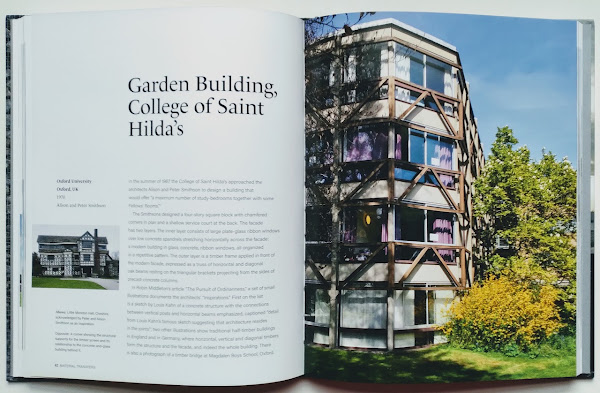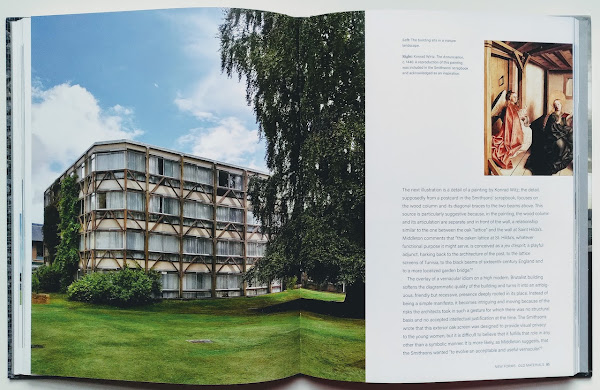Material Transfers
Material Transfers: Metaphor, Craft, and Place in Contemporary Architecture
Françoise Astorg Bollack
The Monacelli Press, December 2020
Hardcover | 8 x 10 inches | 168 pages | English | ISBN: 978-1580935432 | $50.00
PUBLISHER'S DESCRIPTION:
REFERRAL LINKS:
SPREADS:
Françoise Astorg Bollack
The Monacelli Press, December 2020
Hardcover | 8 x 10 inches | 168 pages | English | ISBN: 978-1580935432 | $50.00
PUBLISHER'S DESCRIPTION:
Architect, architectural historian and preservationist Francoise Bollack explores the use of traditional materials with contemporary forms and the corollary of contemporary materials applied to traditional forms and the blurring of the boundary between the two. Nineteen projects in the US, Europe, Japan, and New Zealand are examined. Among the featured architects are Kengo Kuma, architect of the Tokyo 2020 Olympic stadium, MVRDV, a highly regarded Dutch firm, and Lacaton & Vassal of Paris.
Françoise Bollack is the principal of Françoise Bollack Architects, a firm that specializes in preservation and reinvention of historic structures, and a faculty member at the Columbia University School of Architecture, Planning and Preservation.
REFERRAL LINKS:
A couple chapters in New York architect Françoise Bollack's new book, Material Transfers, are called "Old Forms, New Materials" and "New Forms, Old Materials." These phrases immediately bring to mind Bollack's previous book, Old Buildings, New Forms, from 2013. Evident in the two books is a clear appreciation for old buildings as well as a certain duality between old and new. Bollack has a clear preference for hybrid assemblages over solutions created by either/or thinking, the latter of which often leads to demolition over adaptive reuse and forms divorced from any predecessors in the built environment.
While the 2013 book focused on "New Directions in Architectural Transformations," as spelled out by its subtitle, the new book is open to more expansive approaches of contemporary architecture interacting with historic buildings. Yes, there are a few creative transformations of old buildings among the eighteen buildings in Material Transfers, but there are also many new buildings that echo older buildings through their forms and materials. Take MVRDV's Glass Farm, a double-whammy: the zoning-dictated envelope resulted in a farmhouse-shaped building, one the architects wrapped in glass panels printed with images of area buildings.
MVRDV also makes an appearance with Crystal Houses, a store on Amsterdam's posh P.C. Hooftstraat that features a replica facade made of traditional terracotta bricks dissolving into solid glass bricks at street level. It and the Glass Farm appear in the book's fourth chapter, "Mimesis, in Defense of Imitation," which follows the two chapters mentioned above. This phrase led me to expect Morris Adjmi's Sterling Mason, a residential building in New York's Tribeca neighborhood in which old and new are fused into one development. Adjmi's addition literally mirrors its early 20th-century neighbor, but with GFRC instead of brick and gray instead of orange. Adjmi does appear in the "Old Forms, New Materials," such that it's not hard to grasp which architects practice the style of architecture Bollack argues for in the book.
The building that grabbed my attention the most is the Garden Building, College of St. Hilda's Oxford University by Alison and Peter Smithson, completed in 1970 (spreads, below). Outside of the book's first chapter, "Remembered Forms, New Materials," which looks to the Renaissance and 19th century for precedents for the book's position on forms and materials, the Garden Building is the oldest building in the book. But it's new to me and it's very appealing, which I think this stems in part from what Bollack calls "the overlay of vernacular idiom on a high modern, Brutalist building." Although the pieces supporting the wood screen are concrete pilasters that engage with the building behind it, the mix of wood, concrete, and glass softens the whole and creates a strange hybrid — one architects today can learn lessons from.
SPREADS:








